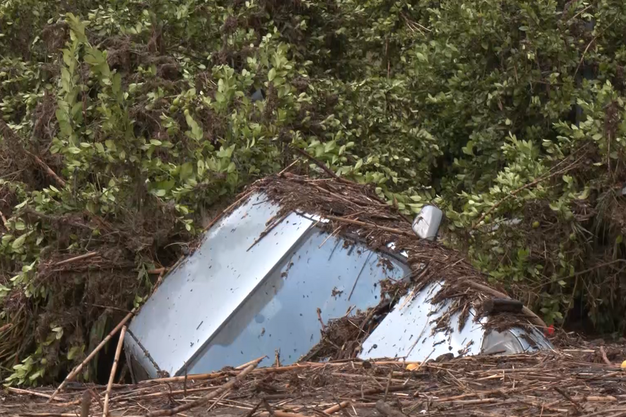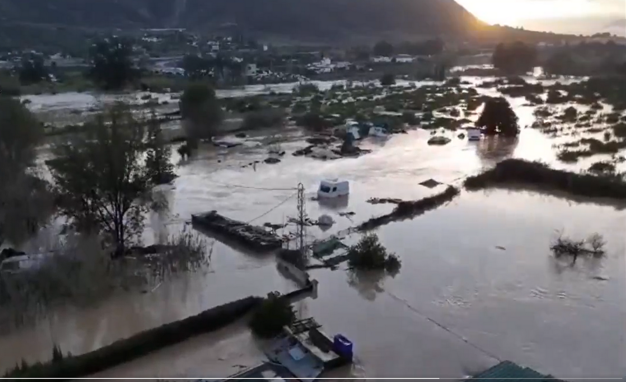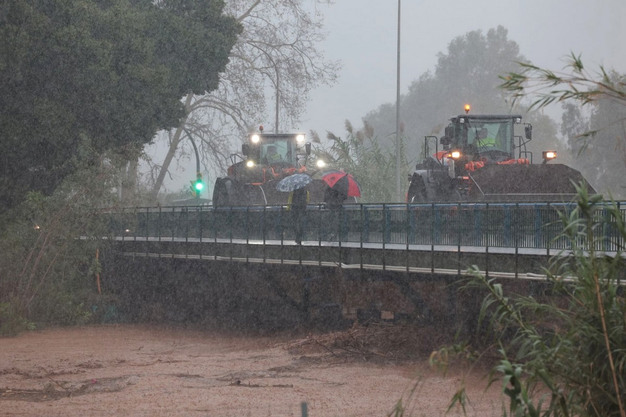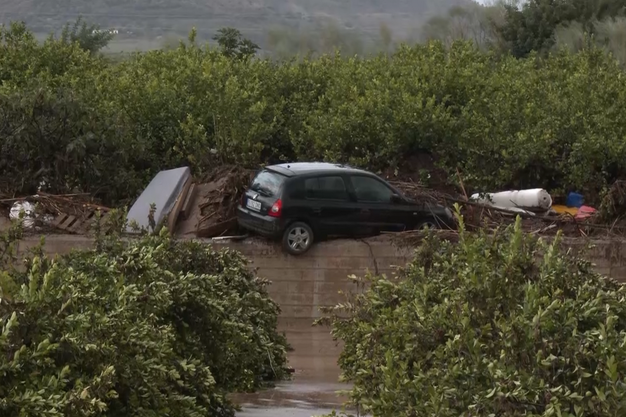As Spain's Aemet meteorological services had predicted, on Wednesday morning at around 10 a.m., the time at which a red alert was activated in various districts of Malaga for potentially extreme risk due to the weather, heavy rain began to fall in the Guadalhorce Valley.
Just a couple of weeks ago, some 2,000 hectares of crops were damaged to varying degrees by flooding when the Guadalhorce River overflowed during the latest storms. "Just in the area between Alora and Malaga, which is where citrus crops are mostly located, there are about 55 km of riverbank where the water overflowed, flooding more than 200 meters on each side of the river. If we take into account all the areas where the water flooded even further, and those in the upper part of the river, that number probably falls short compared to the total amount of hectares affected," says a local citrus company.
"There were farms where the water flowed and retreated with practically no damage, but in others, the force of the water even caused the uprooting of trees. In any case, what the flood did do was leave a lot of weeds and waste behind, because the riverbeds are generally not clean."

"We must keep in mind that when we talk about a certain number of liters per square meter of rainfall, that water moves from upper to lower areas, so those lower areas get all the water that has rained plus all the one coming from the upper areas." In fact, this increases the destructive force of the water, especially when it is carrying weeds, mud and other materials."
"In the last few days, the local councils have stayed active and have been cleaning up the banks and the roads, and they are trying to ensure that many agricultural producers who do not have insurance receive the help they need to clean up and recover their farms. We are talking about small and medium-sized growers for whom it is difficult to cope financially with such situations."

Source: Guardia Civil.
Schools, many stores and offices closed for the day in Malaga, where people have been trying to work remotely where possible after they were alerted to the risk on their phones the previous night. "In our case, no growers will go out into the fields today, as you'd expect, and we have closed the warehouse to avoid any risk for our workers. After what happened in Valencia, it is better to overdo it than to fall short when it comes to safety.
"Since the torrential rains at the end of October, some citrus farms, mostly of lemons, remain inaccessible. In others that were located on hills and ridges we were able to harvest some fruit on Friday and Saturday. But after the rains, we will have to wait again to get into the fields to harvest, hoping that losses will be kept to a minimum."
As the morning progressed, the rains in the province became more intense, making it necessary to suspend the city bus service, trains and traffic at various points, given the risk of overflow of the Campanillas river, a tributary of the Guadalhorce. Following instructions from the Government of Andalusia, houses located near the river bank were evacuated.

Source: Diario Sur.
According to the first provisional balances, the province of Malaga had already recorded more than 100 liters per square meter of rainfall after 1 pm, and the rain continued to fall. Reports updating the flood risk assessment in the Demarcation of the Andalusian Mediterranean Basins, drawn up by the Andalusian Regional Government, said that more than 9,700 hectares had been identified as being at potential risk of river flooding. "That is why it is important to be prepared."
"Nature is uncontrollable. According to experts, torrential rains will become more intense and more frequent, so this is one more reason to listen to the growers. When we call for river cleaning, it is not because we are against reed beds or riparian vegetation, but because we know that these weeds can also cause destruction when they are carried downstream."

